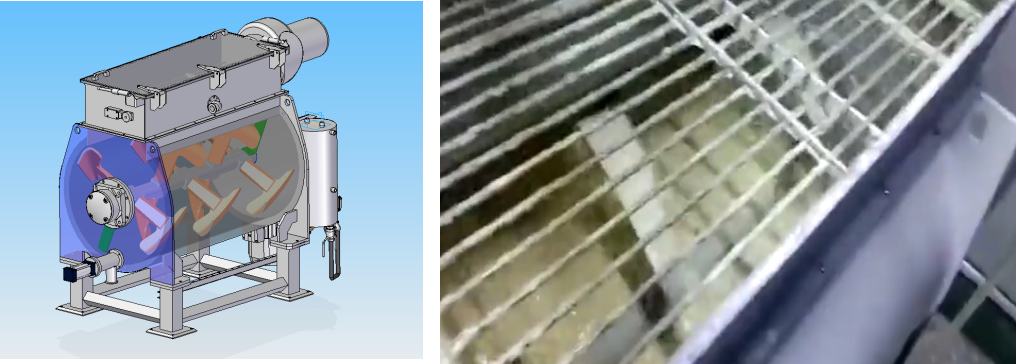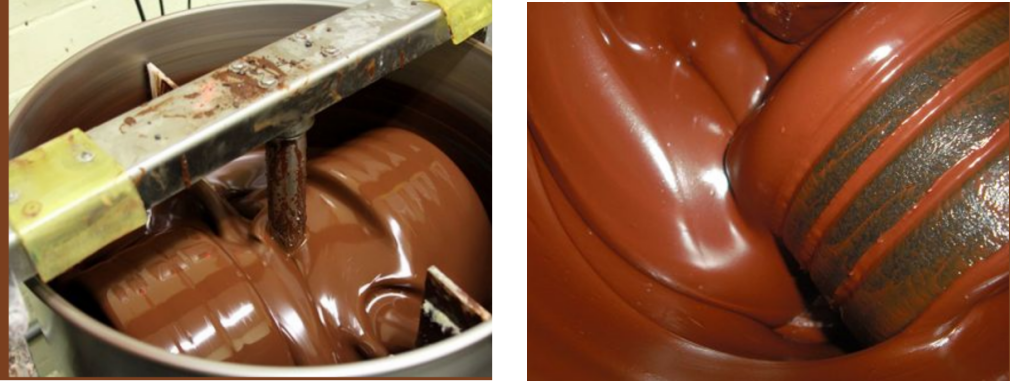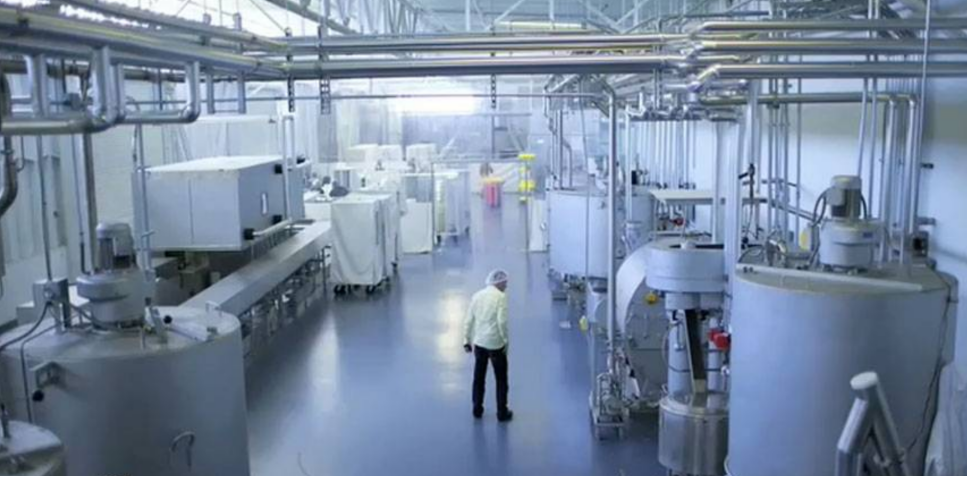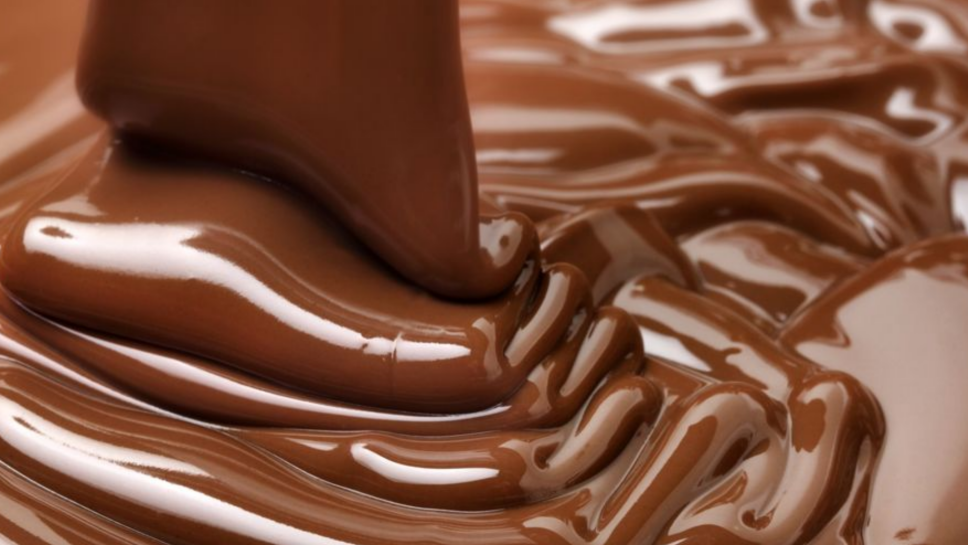In pursuit of pure dark chocolate, you don’t need to add any auxiliary materials, even the most basic sugar, but this is the choice of the minority after all. In addition to cocoa mass, cocoa butter and cocoa powder, popular chocolate production also needs ingredients such as sugar, dairy products, lecithin, flavors and surfactants. This requires refining by Conching Machine.
Grinding and refining is actually a continuation of the previous process. Although the fineness of the chocolate material after grinding has reached the requirement, it is not lubricated enough and the taste is not satisfactory. Various materials have not yet been fully combined into a unique flavor. Some unpleasant taste is still present, so further refinement is required.
This technology was invented by Rudolph Lindt (the founder of Lindt 5 grams) in the late 19th century. The reason why it is called "Conching" is because it was originally a circular tank shaped like a conch shell. The conch (conche) is named from the Spanish "concha", which means shell. The chocolate liquid material is turned over and over again by the roller for a long time in such a tank, pushing and rubbing to obtain delicate lubrication, aroma fusion and unique flavor taste, this process is called "grinding and refining"
While refining, various auxiliary materials can be added.

Chocolate Conching Machine
Regardless of the taste and taste enjoyment brought by those subtle accessories, the pursuit of the original taste of natural pure dark chocolate seems to be much simpler in the choice of machines and processes. Many small workshops can even use a melanger to complete the process. It's just a matter of time and effort.

Melanger
Raw Material Pretreatment
In order to adapt to the technical requirements of chocolate production and facilitate mixing production, some raw materials need to be pre-treated.
- Pretreatment of cocoa liquor and cocoa butter Cocoa liquor and cocoa butter are solid raw materials at room temperature, so they must be melted before mixing with other raw materials before feeding. Melting can be carried out in heating and melting equipment such as sandwich pots or heat preservation tanks. The temperature during melting should not exceed 60°C. The holding time after melting should be shortened as much as possible and should not be too long. In order to speed up the melting speed, the bulk raw material should be cut into small pieces in advance, and then melted.
2. Sugar pretreatment Pure and dry crystallized sugar is generally crushed and ground into powdered sugar before being mixed with other chocolate raw materials, so as to better mix with other raw materials, improve the utilization efficiency of fine grinding equipment and prolong the service life of the equipment. service life.
There are generally two types of sugar mills: one is a hammer mill, and the other is a toothed disc mill. A hammer mill is composed of a hopper, a screw feeder, a hammer mill, a screen, a powder box, and an electric motor. . The granulated sugar is ground into sugar powder by the high-speed rotation of the hammer head, and then sent out through a sieve with a certain number of meshes. The commonly used sieve mesh is 0.6 ~ 0.8mm, and the average production capacity is 150 ~ 200kg/h. The toothed disc grinder is composed of a rotating toothed rotating disc and a fixed raised toothed disc. Sugar falls into the high-speed rotating toothed disc and rubs against the fixed toothed disc under severe impact. Grind it into powdered sugar and send it through a sieve. The average production capacity is about 400kg/h.
In addition, Ruitubuler Company once introduced that the new two-step grinding method can reduce the amount of cocoa butter by about 1.5 to 3% when mixing sugar with other raw materials of chocolate without pretreatment, which is more conducive to fine grinding and refining.
This seemingly complicated process requires a large factory and chocolate refining system.

Chocolate refining system
3. Mixing, fine grinding and refining
(1) mixed
When producing chocolate, the first thing to do is to mix various ingredients of chocolate, such as cocoa mass, cocoa powder, cocoa butter, sugar and milk powder, etc., into a uniform chocolate sauce. The production of this chocolate sauce is done by a mixer. Yes, the device of the mixer includes the functions of mixing, kneading, quantification and feeding. According to the formula, after quantification and feeding, it is mixed to form a smooth lipid mass. Cocoa butter becomes a continuous phase and is dispersed among other materials. Combine various ingredients evenly and provide favorable conditions for the normal operation of the refiner
There are two types of mixers: one is a double-shaft mixing kneader, and the other is a double-arm Z-type kneader. There are a series of inclined prize leaves on each shaft of the double-shaft mixing kneader. The two shafts rotate in the same direction. The prize leaves on the two shafts are alternately inserted into the prize leaves of the adjacent shaft. There is a certain gap when approaching and leaving. In this way, a wedge-shaped flow is generated. The material runs parallel to the axis along the pot wall of the kneader. Whenever it reaches the end of the pot wall, the flow direction will suddenly change, which can completely ensure the high-speed operation of the material. Pure parallel flow produces a spiral movement of material between the shaft and the prize leaves
All kneaders have interlayer insulation devices to ensure a constant temperature during mixing and kneading, as well as quantitative devices. The silos or tanks for sugar, milk powder, cocoa liquor and cocoa butter are installed near the kneader. Feed weighing and quantification can ensure the accuracy of ingredients. After the mixing is completed, it is sent to the next process through continuous feeding. The entire feeding, mixing and feeding process can be operated by a manual control cabinet or controlled by a computer program.
(2) fine grinding
When powdered sugar is used in the ingredients, the chocolate paste can be directly fed to the five-roller refiner after being mixed. If sugar is used to directly mix with other chocolate raw materials, it needs to be firstly or pre-grinded, and then finely ground. , that is, the above two-step grinding method can reduce the amount of cocoa butter by 1.5~3% when mixing chocolate materials, and the amount of fat is less, mainly because the surface area of crystalline sugar is smaller than that of powdered sugar. The finer the powdered sugar, the larger the surface area , the more oil is continuously dispersed in its interface, so two-step grinding can save oil
According to the requirements of the grinding process, the total fat content of the mixed chocolate sauce is required to be about 25%, so the amount of fat added should be controlled during mixing so that the chocolate sauce is not too dry or too wet, so as to ensure that the silver cylinder is normal during grinding run.
The mixed chocolate sauce is sent to the hopper of the primary grinder by a screw conveyor, or directly sent to the primary grinder through a conveyor belt. Primary or fine mills have automatic feed hoppers and a device that prevents the machine from running dry and causing mechanical wear. The primary grinder is a two-lift machine, and the fine grinder is a five-roller machine that can be connected in series for fine grinding, which not only reduces the amount of oil used, but also the narrow and small sauce particles after pre-grinding are more conducive to the grinding of the five-roller machine and the dry refining of the refiner .
Generally, the fineness of the chocolate material before grinding is about 100-150um, and the mass diameter of the chocolate slurry after fine grinding is required to be 15-35um. Factories with good quality chocolate generally use a five-roller refiner, which is characterized by high output and uniform thickness. The output of the five-roll machine varies with the length of the roller, and the model is also determined according to the working length of the roller. The models are 900, 1300 and 1800, and the working length of the roller is 900mm, 1300mm and 1800mm. 400mm, such as model 1300, when the chocolate fineness is 18-20um, the output is 900-1200kg/hr.
(3) Refining
The complex physical and chemical changes in the chocolate material during the refining process have not yet been fully understood. Therefore, many chocolate manufacturers in the world still regard it as a highly hidden secret, but the role of the refining process and the changes in the chocolate material are very important. obviously.
Refining has the following obvious effects: the moisture of the chocolate material is further reduced, and the residual and unnecessary volatile acids in the cocoa sauce are removed; the viscosity of the chocolate material is reduced, the fluidity of the material is improved, and the color of the chocolate material is improved. The changes in flavor, fragrance and taste further make the chocolate material finer and smoother.
Refining process and method
The chocolate refining method has undergone great changes with the development of production. In order to improve the refining efficiency and obtain the best chocolate flavor and taste, the refining method has been continuously improved and improved, and the method of refining time, temperature, dry refining and wet refining is preferred. Variety:
refining time
In the traditional refining method, the chocolate material is in the liquid phase state at room temperature for long-term refining, which takes 48 to 72 hours, and the production cycle is long. How to shorten the cycle and keep the original quality unchanged is a modern refining machine using dry liquid phase refining. As a result, refining time can be shortened to 24 to 48 hours. It has also been proposed that the cocoa material can be pre-treated by sterilization, deacidification, alkalization, aroma enhancement and roasting, which is the so-called PDAT reactor, and the refining time can be reduced by half. However, the refining time is still an important factor in maintaining the quality of chocolate, and a certain amount of time is required to meet the delicate and smooth taste of chocolate. Different types of chocolate require different refining time. For example, milk chocolate needs a shorter refining time of about 24 hours, while dark chocolate with high cocoa content takes a longer refining time, about 48 hours.
Refining temperature
There are two trends in the temperature control of the refining process: one is refining at a relatively low temperature of 45-55°C, which is called "cold conching", and the other is refining at a relatively high temperature of 70-80°C, called "hot conching". Refining (Hot Conching)". These two refining methods can be applied to different types of chocolate such as dark chocolate and milk chocolate. But generally milk chocolate is refined at 45-50°C, while dark chocolate is refined at 60-70°C. When milk chocolate is refined at 50°C, its water content decreases slowly from 1.6-2.0% to 0.6-0.8%, and the decrease in total acid content is also relatively small. If the conching temperature is increased by 5°C, the improvement in viscosity can be obtained and the conching time can be shortened; when the conching temperature is increased from 50°C to 65°C, the result is improved aroma, viscosity and fat saving, without affecting the unique aroma of milk chocolate. Therefore, refining milk chocolate below 60°C is neither economical nor reasonable, and European countries generally adopt higher refining temperatures.
Refining method
The refining method has developed from liquid refining to dry, liquid refining and dry, plastic, liquid refining in three ways:
Liquid refining:
Also known as liquid phase refining. During the refining process, the chocolate material is always kept in a liquefied state under heating and heat preservation. Through the long-term reciprocating motion of the rollers, the chocolate material is constantly rubbed and turned to contact with the outside air, so that the moisture is reduced, the bitterness gradually disappears, and the perfect chocolate aroma is obtained. At the same time, the chocolate is uniform Melting makes cocoa butter form a grease film around each fine particle, improving lubricity and melting. This is the original traditional refining method, which is rarely used now.
Dry and liquid refining:
In the refining process, the chocolate material goes through two stages successively, that is, the dry state and the liquefaction stage, that is, the two stages of dry refining and liquid refining are carried out together. First, the total fat content in the dry phase state is between 25% and 26%, and it is refined in powder form. This stage is mainly to increase friction, turning and shearing to volatilize water and volatile substances. In the second stage, oil and phospholipids are added and refined in a liquid state to further homogenize the material, making the plasmid smaller and smoother, and improving the aroma and taste.
Refining in three stages: dry phase, plastic phase and liquid phase:
Dry conching stage: the reduction of moisture and unwanted compounds such as volatile acids, aldehydes, and ketones remaining in the cocoa bean to an ideal level without affecting the final chocolate taste.
Plastic refining stage: In addition to eliminating the agglomerated materials, it again produces the effect of improving the quality of mouthfeel like traditional refining.
Liquid phase refining stage: the final refining stage, to further improve the refining effect of the previous stage, and form the most suitable flavor under the best fluidity.
After this step is completed, the chocolate sauce becomes fine and lubricated, smells fragrant, and has a glossy luster. It can be used for heating, tempering, molding or making other sweet chocolate desserts.

Post time: Nov-28-2022
